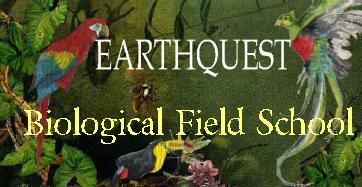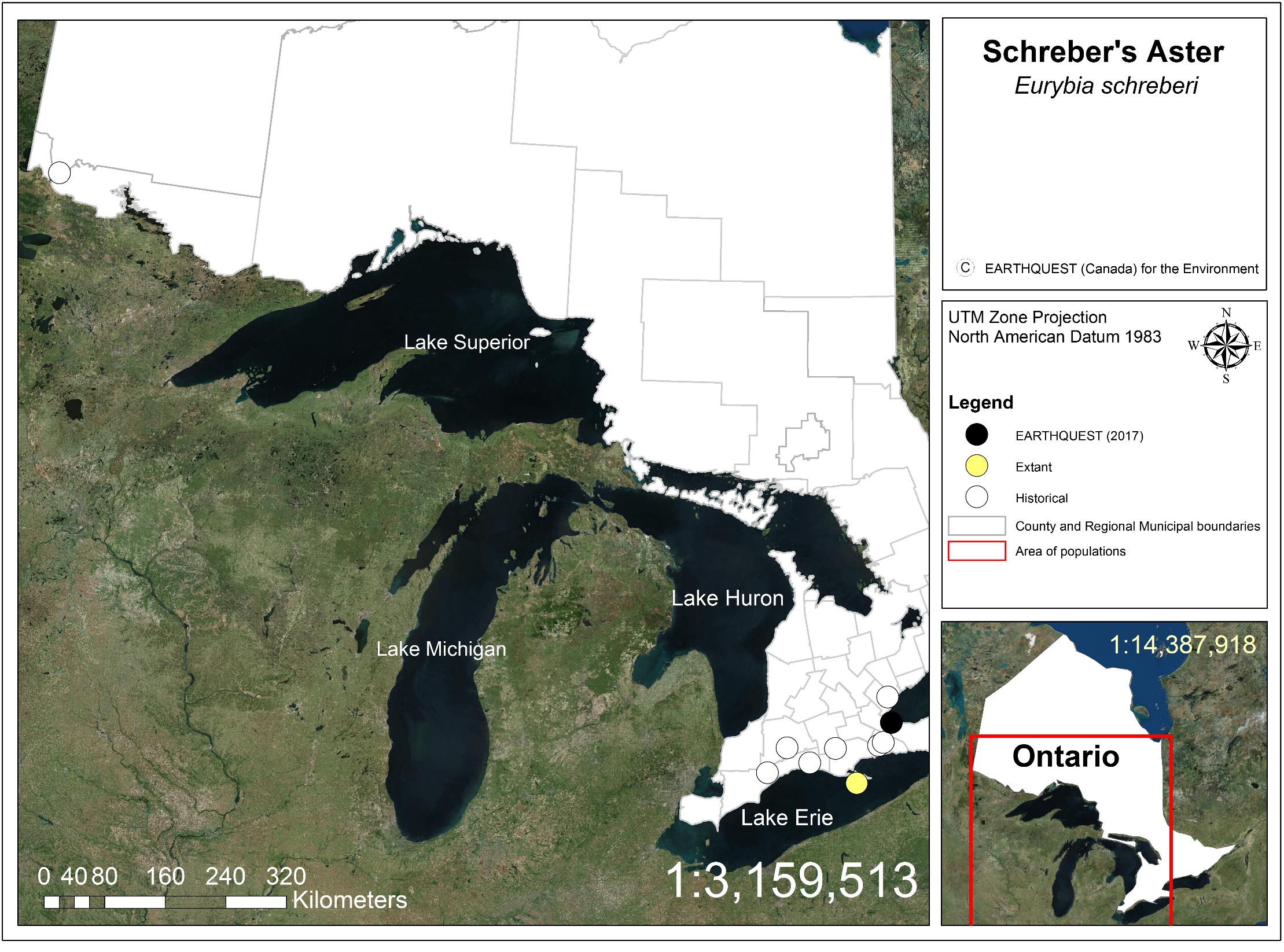
Spring | ||||||||||||||||
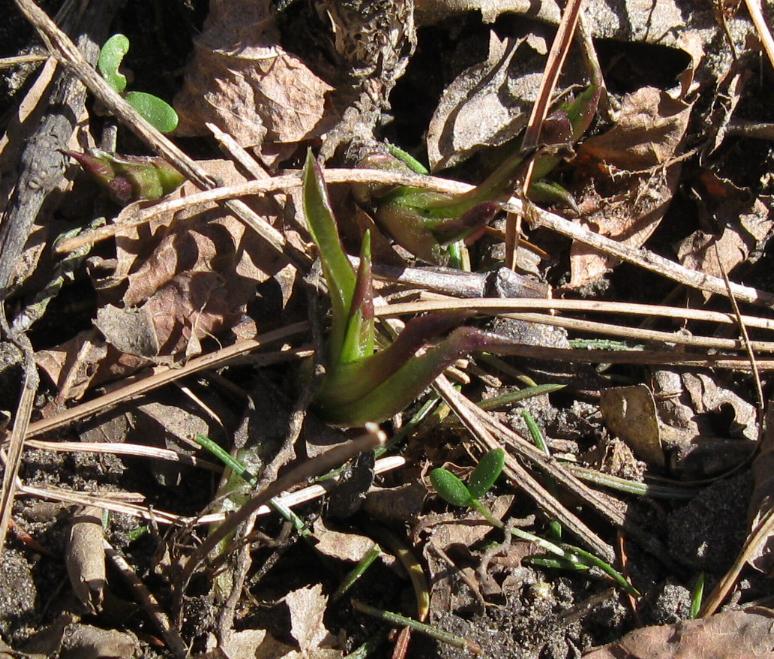 |
Emergence period: April 14 | |||||||||||||||
Summer | ||||||||||||||||
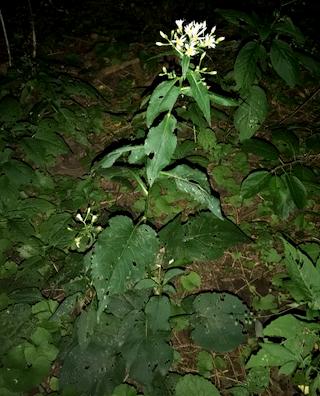 |
Bottom leaf
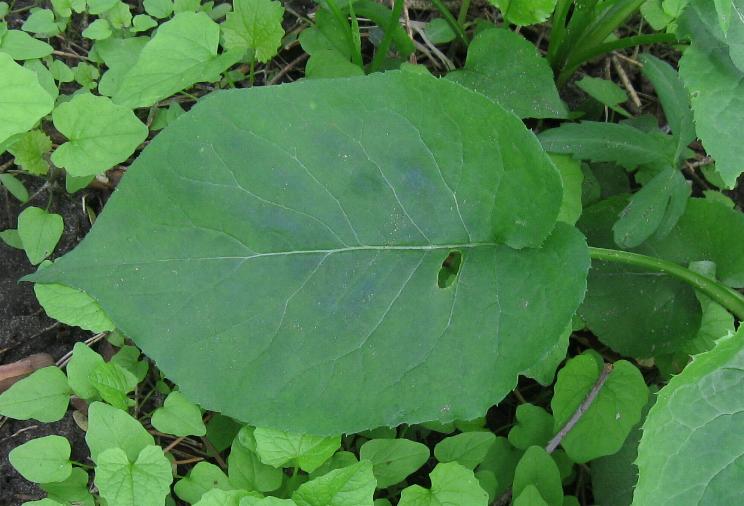 Middle leaf
| 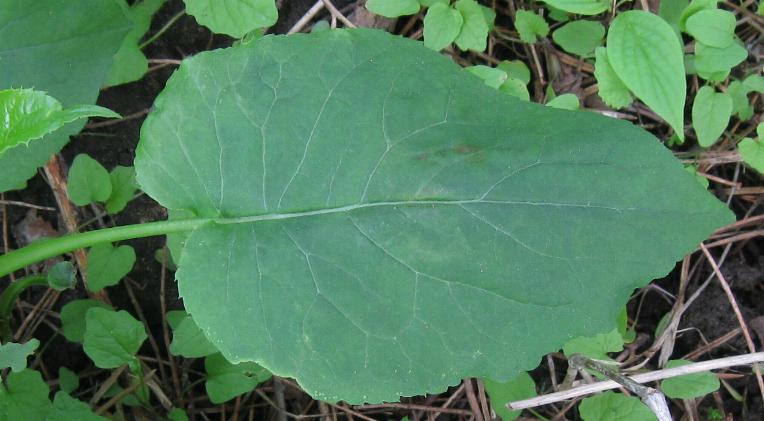 Photo: Dave Jolly Upper leaf
| 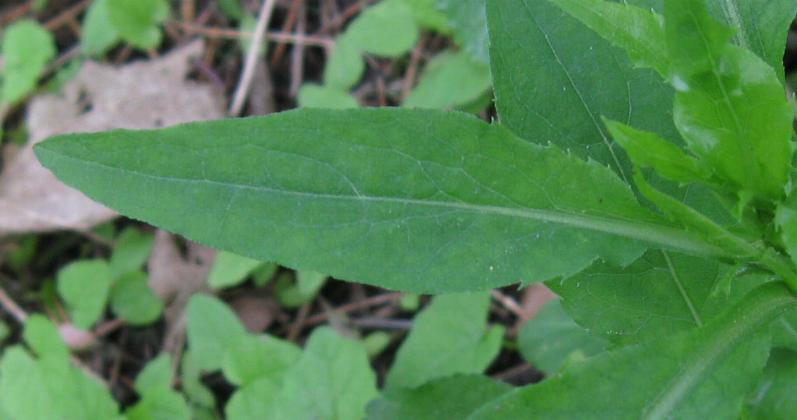 Photo: Dave Jolly Flower
|
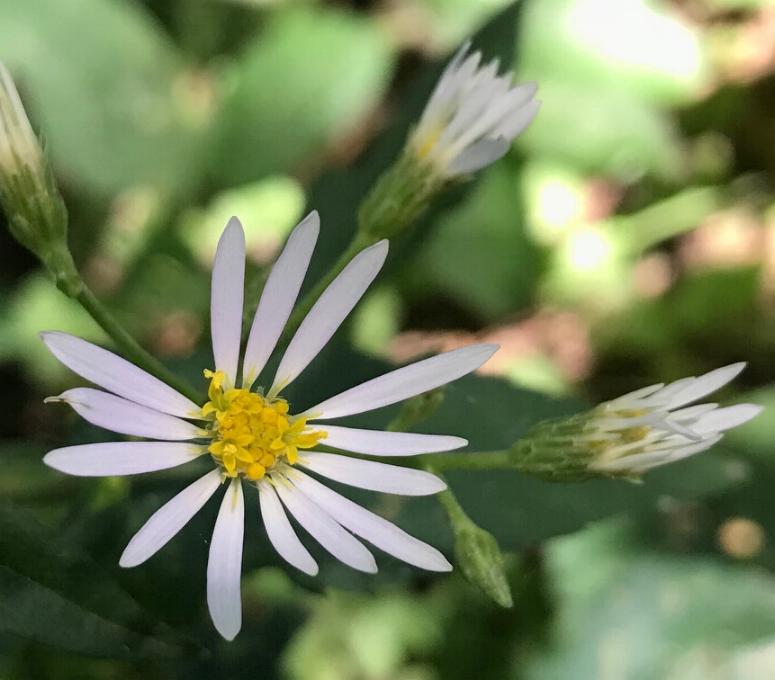 Photo: Dave Jolly Fall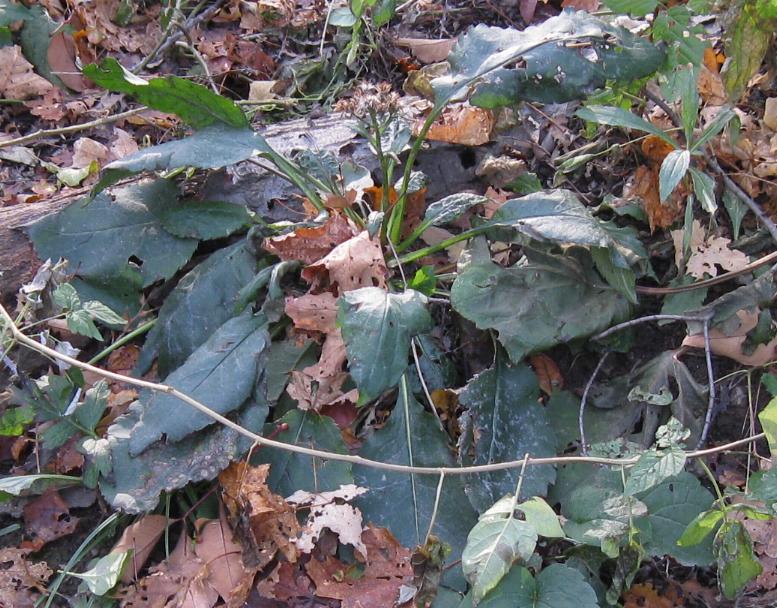 Winter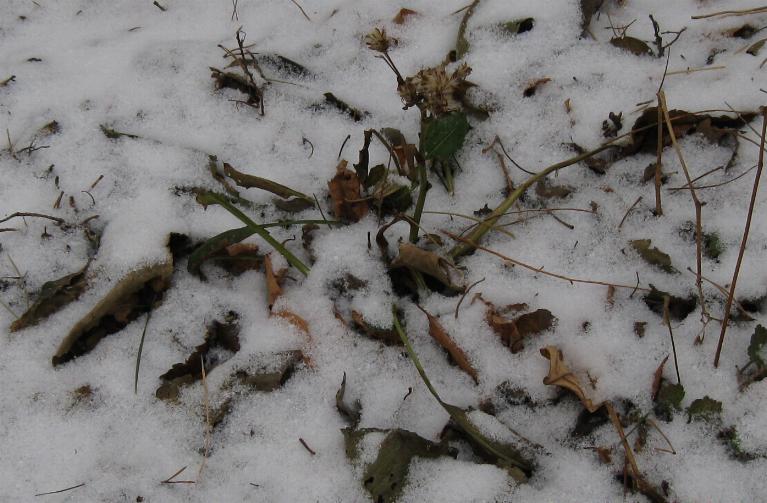
Flowering period: Most Ontario plants are stunted and do not attain a height of more than 20 cm (Semple 2002). August 13th to October 10th (Jolly 2015a, 2015b).
5 Second Rule Identification: A herbaceous perennial wildflower that grows up to 110 cm tall with pale to violet blue flowers and flat-topped flowerhead arrangement (Jolly 2015a, Semple 2002). The upper leaves are sessile, elliptical with pinnate venation. The middle leaves are cordate with pinnate venation and petioles. The lower leaves are heart-shaped with U-shaped sinuses.
Biology and Ecology: Like other asters this species spreads is colonally through underground rhizomes. Insect pollinators observed by Dave Jolly include Halictid bees (Halictidae family) and Spotted Cucumber Beetle (Diabrotica undecimpunctata).
Population Size: The exact Ontario population size is unknown. There are 7 historical and 1 extanct Element Occurrence records logged with the Natural Heritage Information Centre exist between 1989 and 2000. Brian Popelier spent several hours surveying a new population in Hamilton in October, 2017. This observation was confirmed by Dr. John Semple and Dave Jolly.
Habitat & Soils: A plant of well drained oak deciduous forests More information is needed on Ecological Land Classification vegetation type parameters to ascertain ecosite preferences for Ontario populations. The population in the Stoney Creek are of Hamilton discovered by Brian Popelier was found growing in Fresh – Moist Oak – Sugar Maple Deciduous Forest Type (FODM9-1) (Jolly 2015a).
Threats: Threats are not well understood, but invasive species such as Garlic Mustard and recreational hiking may hinder the Hamilton population.
Recovery: Currently, no recovery team has been assigned and no recovery strategy exists.
Biometrics: Individuals range in size from 50 - 110 cm in height. Leaves are cordate, or heart-shaped, and elliptical with petioles on the middle and lower leaves: bottom leaf; 5.4 - 10.5 cm wide by 15.8 - 21.7 cm long, middle leaf; 20.5 - 22.0 cm wide by 8.0 - 9.0 cm long, upper leaf; 1.4 - 3.8 - 5.0 cm wide by 2.4 - 6.8 cm long.
Environmental Protection: This species receives no protection under the provincial Endangered Species Act (2007) or federal Species at Risk Act.
Confusing look-a-likes: This species resembles Large-leaved Aster (Eurybia macrophylla) and White Wood Aster (Eurybia divaricata).
References:
Distribution: Oldham (2017) reports current, historical and extirpated populations have been found in 6 counties and regional municipalities; Elgin, Haldimand, Hamilton, Middlesex, Oxford, and Niagara region with historical records in EcoDistrict 7E-4. The Natural Heritage Information Centre reports an historical record for Rainy River.
| ||||||||||||
$35.00 CAD + shipping and handling ($15 CAD within Canada, $20 CAN to the USA)
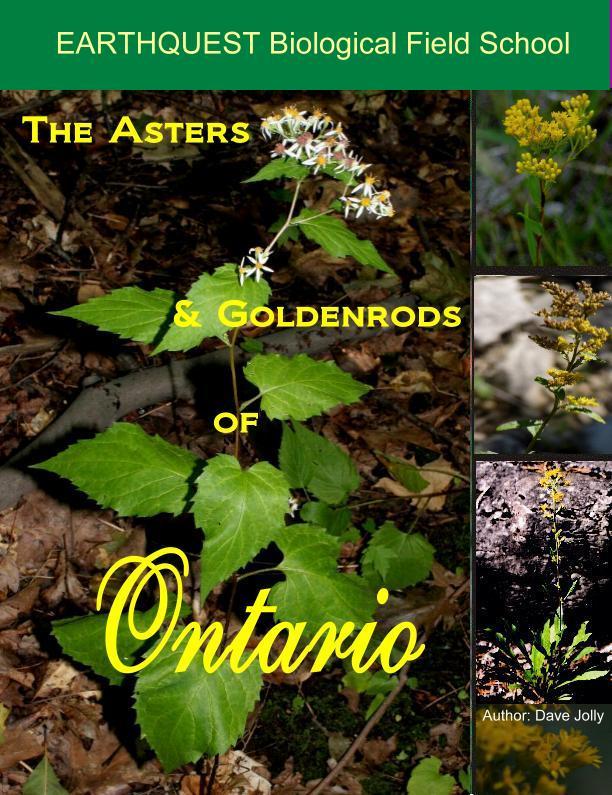
Photo: Dave Jolly
for more information please click on;

Senior Instructor/Ecologist/Consultant & President
D. Jolly, B.Sc.
| EARTHQUEST (Canada) for the Environment Tel: 226-926-1470 ©copyright EARTHQUEST (Canada) for the Environment | Website designed and maintained by D. Jolly Last Updated 13/09/18 |
 EARTHQUEST (Canada) for the Environment
EARTHQUEST (Canada) for the Environment
